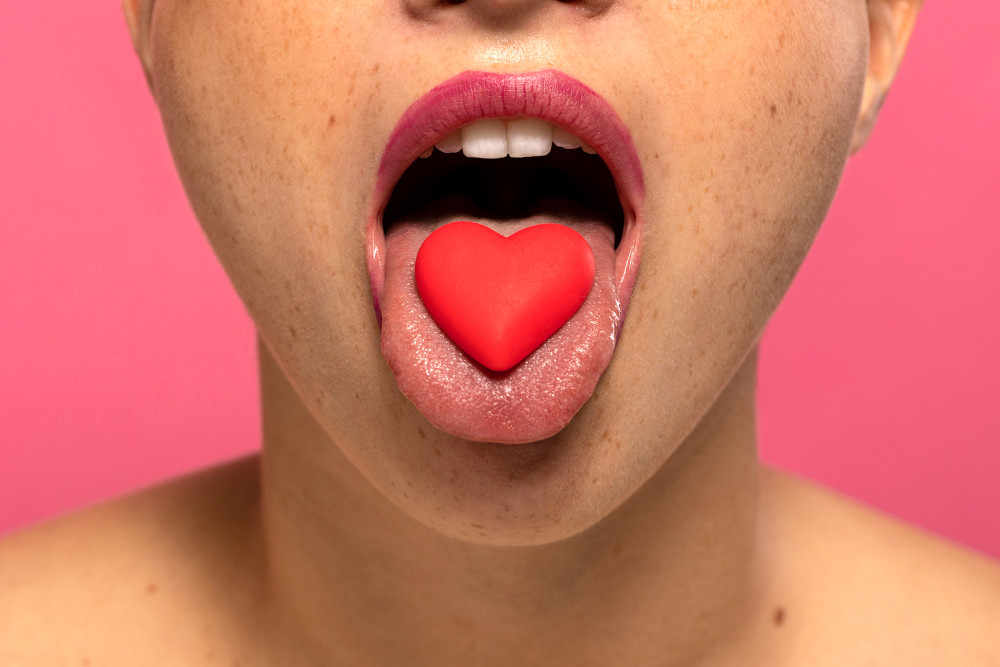The tongue is an organ in the mouth and has many functions in daily life, including digestion. The condition of the tongue can also indicate a person's health. What are the functions and anatomy of the tongue? Check out the following article.
Structure and Anatomy of Human Tongue
The tongue is a unique organ in the human body. The tongue organ is a type of muscle that is not connected to the bones at either end. The tongue is connected to the tip of the hyoid bone, the only bone that is not connected to any other bone in the human body.
The tongue is an organ that is mostly made of muscle. It is embedded in the mouth by strong tissue and is covered with a mucous layer, which is a moist pink-colored coating that covers certain organs and body cavities. The tongue is also covered in different types of papillae, delicate structures shaped like tiny spots that make the tongue feel rough. On the surface of the papillae are thousands of taste-bud cells that allow you to taste or feel food.
Below are the parts of the tongue, namely:
- Tongue root
This is the back third of the tongue. The base of the tongue is at the back end of the mouth and near the throat. It is attached to the hyoid bone and mandible (lower jaw), so it cannot move freely. The root of the tongue is usually not visible from the outside if you stick out your tongue.
- Tongue body
The tongue body is the largest part of the tongue, which is about two-thirds. The tongue body is easy to move and has many functions in the digestive system.
- Apex (tip of the tongue)
The tip of the tongue is pointed towards the front of the mouth and is easily moved in all directions.
- Dorsum
The dorsum of the tongue is the part whose surface looks slightly higher than the body of the tongue. In this part, it can be seen that there is a hollow line forming the letter V called the terminal sulcus.
- Under the tongue
You can see blood vessels running on the lower or inferior part of the tongue.
Read more: Pengobatan Rumahan untuk Mengatasi Hidung Tersumbat
Tongue Functions
The tongue is known to function as a sense of taste, but the tongue actually has various other functions, namely:
Helps chew and swallow food
The tongue helps chew, swallow food, and swallow liquids when drinking. The tongue actively moves food around in the mouth, positioning it for further chewing. Food mixed with saliva is then moved to the pharynx before being swallowed. The tongue can also help with oral cleaning, keeping food from coming into contact with the teeth for too long.
Taste the flavor
The surface of the tongue has many taste bud cells and nerve endings that allow you to recognize various tastes such as sweet, salty, sour, bitter and savoury (umami).
Read more: Pointer Laser dapat Sebabkan Kerusakan Mata, Ini Tips Aman Menggunakannya
Helps with speaking/talking
The tongue also helps you to speak. Proper tongue position helps to form words and speak clearly. The shape of the tongue also allows you to articulate sounds precisely. Meanwhile, dysfunction of the tongue can lead to serious speech disorders.
Affects respiration/breathing
The position of the tongue also affects breathing. If there is a tongue muscle disorder, the tongue may block the respiratory tract.
In addition to the above functions, the tongue can also protect the body with the gag reflex, preventing the ingestion of unpleasant and even toxic substances. If the back of the tongue is touched, there will be a strong contraction of the throat muscles so that the saliva closes and blocks the substance or foreign object from entering.
The tongue has an important function in everyday life; therefore, if you have health problems with the tongue, you should consult a doctor or use the consultation feature on the Ai Care application.
Looking for more information and tips regarding health, first aid, and home remedies? Click here!
- dr Hanifa Rahma
Peters, B. (2023). Tongue: Anatomy, Function, and Common Disorders. Available from: https://www.verywellhealth.com/tongue-anatomy-4774957
Hoffman, M. (2021). Picture of the Tongue. Available from: https://www.webmd.com/oral-health/picture-of-the-tongue
Cleveland Clinic. Tongue. Available from: https://my.clevelandclinic.org/health/body/22845-tongue
The Healthline Editorial Team. (2018).Tongue. Available from: https://www.healthline.com/human-body-maps/tongue#1











